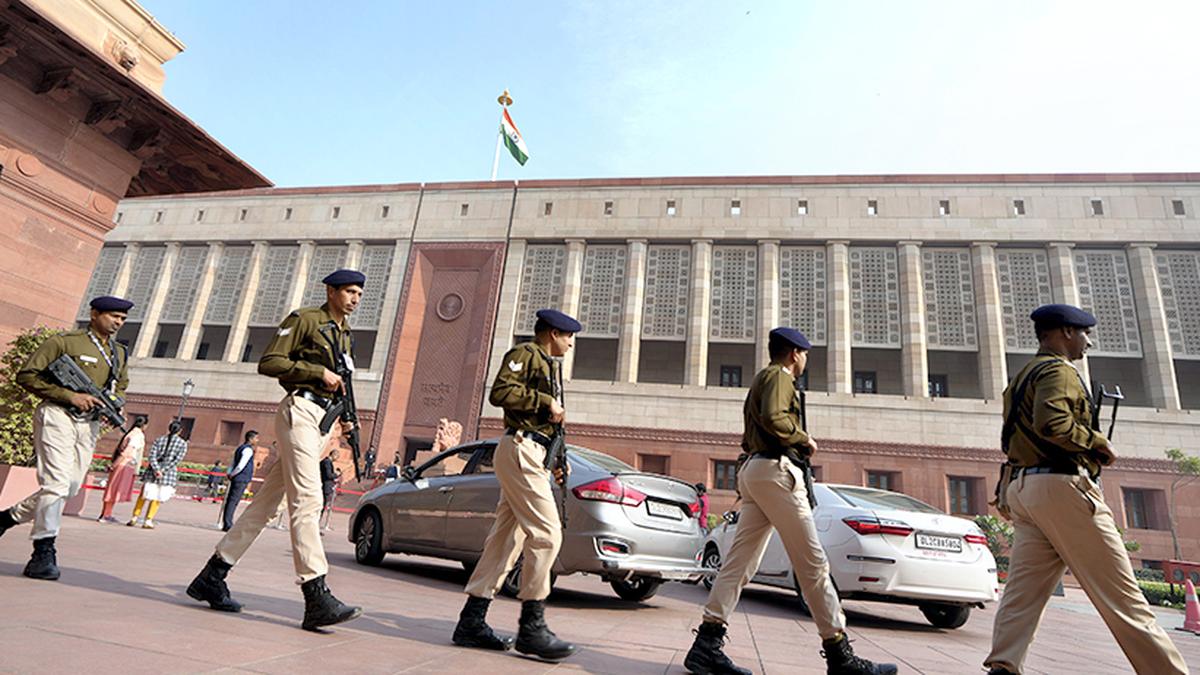Security personnel at Parliament House complex. File
| Photo Credit: PTI
On February 3, 1916, the Canadian Parliament in Ottawa burned down. The fire started in the reading room packed with newspapers and records going back to a century. It spread quickly, consuming the structure. Seven people died. The next day, at 3:00 p.m., Parliament reconvened. Overnight, the country’s administration had found space for it at the Victoria Memorial Museum. A press gallery was installed on a bridge between staircases.
I recently read this account. What struck me was that a press gallery was established even in a makeshift Parliament.
The media is not an inconvenience. It is an elementary part of a parliamentary democracy, especially in a country such as India. The first Secretary-General of the Lok Sabha, M.N. Kaul, said, “Under the British system [which India mimics] the desire is to ventilate grievances, and not so much to secure decisions as decisions generally follow party lines irrespective of the weight of the debate on either side. The debates are intended more for the public outside in order to enable them to form their opinion about the party of people who are working in their best interest.” Without press corps reporting on debates for the public, can this end be achieved?
The first edition of Practice and Procedure of Parliament (1979), written by Kaul and his former deputy, S.L. Shakdher, says, “Press is often considered an extension of Parliament.” Kaul and Shakdher’s book is still the primary reference work on parliamentary rules.
There is a jarring difference between what one reads in the book and the daily reality. This column has often detailed the various restrictions imposed on the press in Parliament. It has to be said again and again. Inside the Parliament building, there are red lines drawn for the press — and not just figuratively. Even outside Parliament, in the courtyard, between the new building and the old, there are retractable barriers put up, to keep the press out.
In the last Parliament session, I happened to cross this barrier. I was immediately surrounded by three male security personnel, who asked me to go back behind the barrier. I protested, arguing that I had no camera. I explained that I was there only to chat with the MPs who were leaving Parliament after it had been adjourned for the day, just as I had been doing for as long as I have covered Parliament. I posed no threat whatsoever. My identity card, issued after verification by the Parliament Secretariat, was hanging from my neck.
I strolled further into the courtyard, refusing to cede ground. The men left and were replaced by two women. They blocked my way and nudged me towards the barrier. I continued to argue. Needless to say, my words had little impact.
By then, the MPs had started streaming out. Many of them, both from the ruling party and the Opposition, recognised me, but not one of them intervened or asked what the argument was about.
It was a futile attempt on my part. The security personnel are bound by the directions of the administration and I was rallying against people who did not decide the rules. Perhaps I was airing my frustration. After all, these were the same grounds that several of my colleagues and I had strolled around, without restrictions, until the new Parliament was constructed.
During the British Raj, reporters were given leeway in the Central Legislative Assembly to self-regulate. This was the case in Parliament in newly independent India as well. The media has functioned for a long time mindful of parliamentary rules. So why do we need concrete red lines now? Why do journalists need to be herded around by security personnel?
I retreated that day, angry with myself for causing a minor scene. But looking back, I feel angrier. We have been retreating behind those lines. We have been conceding ground. And every time we leave without protest, we are pushed back further.
Published – September 26, 2025 01:27 am IST
